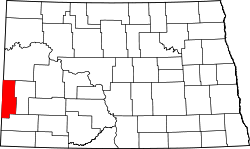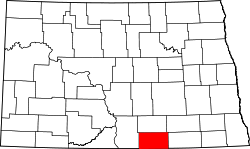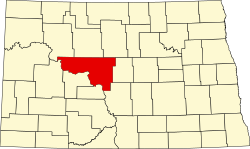| Counties of North Dakota | |
|---|---|
| Location | State of North Dakota |
| Number | 53 |
| Populations | 706 (Slope) – 200,945 (Cass) |
| Areas | 632 square miles (1,640 km2) (Eddy) – 2,742 square miles (7,100 km2) (McKenzie) |
| Government | |
| Subdivisions |
|
This is a list of counties in North Dakota. There are 53 counties in the U.S. state of North Dakota.
Contents
The Federal Information Processing Standard (FIPS) code, which is used by the United States government to uniquely identify states and counties, is provided with each entry. [1] North Dakota's code is 38, which when combined with any county code would be written as 38XXX. The FIPS code for each county links to census data for that county. [2]






















































